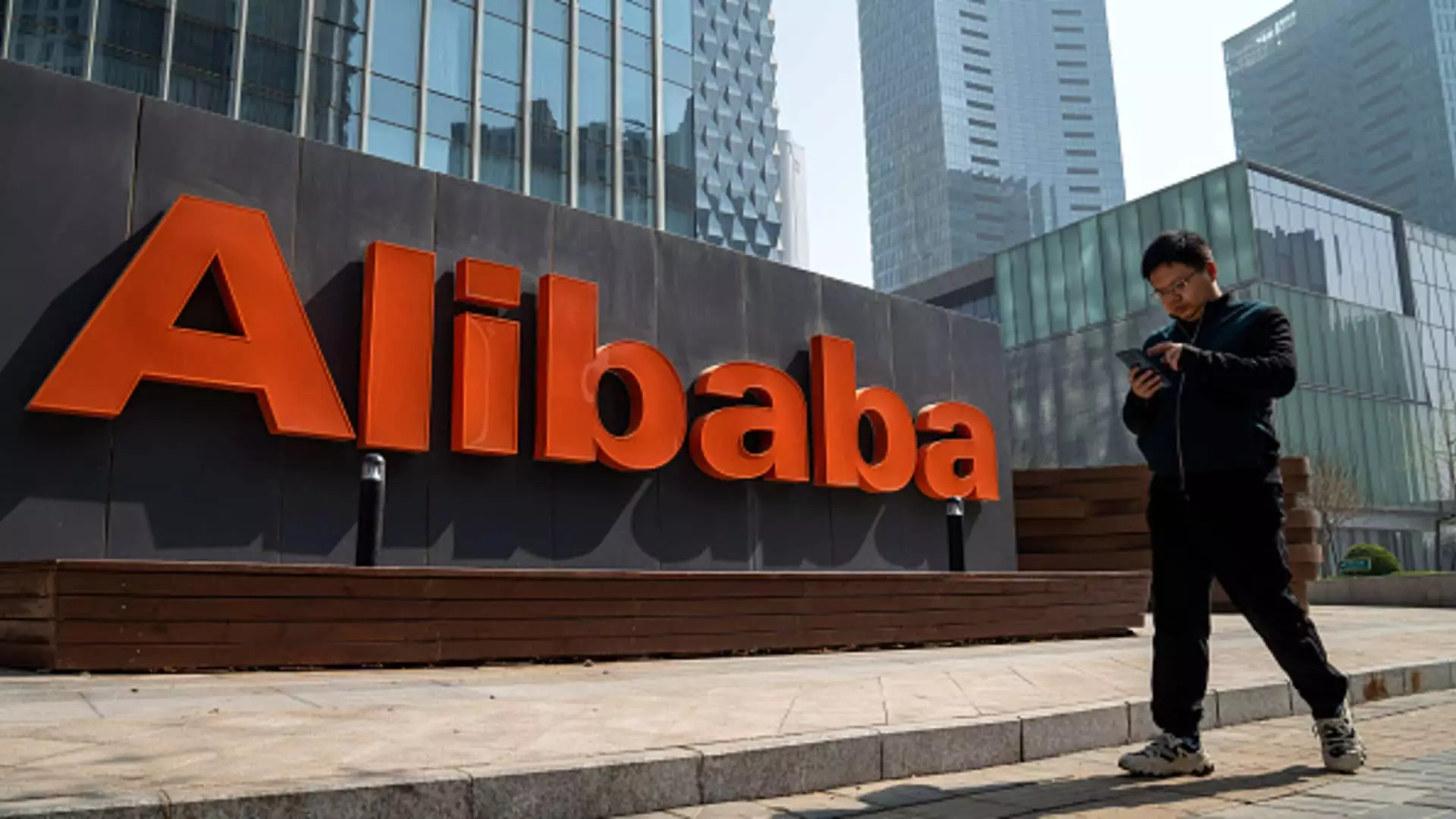E-commerce titan Alibaba continues to navigate the turbulent waters of the Chinese economy, managing to deliver a notable profit increase while still grappling with disappointing sales figures. As third-quarter results unfold, it becomes evident that while the company excels in certain areas, its performance must be scrutinized more broadly within the context of a sluggish market.
Alibaba reported a striking 58% year-on-year surge in net income, amounting to 43.9 billion Chinese yuan ($6.07 billion) for the quarter ending September 30. This result significantly surpassed the LSEG forecast, which anticipated only 25.83 billion yuan. Such profit escalation is attributed mainly to favorable shifts regarding equity investments and reductions in asset impairments. While these financial improvements signal strength, they also suggest that Alibaba’s profit may increasingly rely on extrinsic factors rather than core operational efficiency.
Conversely, the revenue numbers tell a different story, showcasing a 5% annual increase to 236.5 billion yuan, yet falling short of analyst predictions for 238.9 billion yuan. This disparity raises questions about consumer spending trends amid a broader economic slowdown in China. Notably, the company’s main business units, Taobao and Tmall Group, only managed a marginal 1% increase in revenue during the same period. These mixed outcomes highlight a critical point: while Alibaba demonstrates commendable profit-making capabilities, the underlying revenue performance serves as a warning signal regarding market stagnation.
Alibaba’s results unfold against a challenging backdrop characterized by cautious consumer behavior in the Chinese retail space. The company’s struggles resonate with others in the sector, such as JD.com, which similarly disappointed on revenue expectations. Analysts are now observing the effects of recent government stimulus measures designed to catalyze economic growth.
A notable aspect of the economic landscape is the mixed performance of retail sales, which did see a better-than-expected 4.8% increase year-on-year in October. The recent Singles’ Day shopping holiday, a significant period for consumer spending, appeared to reflect an improved consumer sentiment; however, the question remains whether this is a sustained recovery or a temporary blip. Alibaba’s announcements regarding “robust growth” during this period suggest that the company is keen to convey a narrative of resurgence, despite ongoing economic challenges.
Amidst domestic trials, Alibaba’s ventures into overseas markets such as Lazada and Aliexpress proved fruitful, with a commendable 29% sales boost, amounting to 31.67 billion yuan. This growth implies that while Chinese consumers may be tightening their belts, international markets are responding favorably to Alibaba’s offerings. This diversification signifies not just an escape from domestic pressures but also a strategic pivot that could buffer Alibaba against localized economic downturns.
Moreover, the company’s Cloud Intelligence Group reflected a 7% year-on-year sales growth, indicating that the sector remains a pivotal area of development. The cloud business showed improved performance compared to the previous quarter, with leadership emphasizing double-digit growth for public cloud products and even triple-digit growth for AI-related products. Statements from Alibaba’s CEO emphasize an unwavering commitment to innovation, positioning the company not only in the e-commerce space but also as a potential leader in cloud and AI technologies.
However, Alibaba’s path forward is not without its hurdles. The fallout from regulatory crackdowns initiated by Beijing in 2022 continues to shape operational strategies. In response to these challenges, Alibaba has reorganized its management structure within its cloud division to position it as a crucial growth driver moving forward.
The introduction of Alibaba’s own AI model, Tongyi Qianwen, and subsequent AI-powered search tools for external markets underline the company’s ambition to stake its claim within the competitive landscape dominated by entities such as Microsoft and OpenAI. Collaborations, such as the five-year partnership with Indonesia’s GoTo, signify a strategic shift towards leveraging AI capabilities while cementing partnerships that could enhance Alibaba’s footprint in Southeast Asia.
Alibaba’s recent quarterly performance underscores a dual narrative: on one hand, there is impressive profit growth, yet on the other, concerning sales figures amidst economic stagnation. The company’s ability to balance these contrasting narratives will be critical as it seeks to leverage its technological advancements and global strategies. As Alibaba eyes a future rich with potential yet fraught with obstacles, it must remain vigilant and agile to pivot as necessary in an unpredictable economic landscape.

